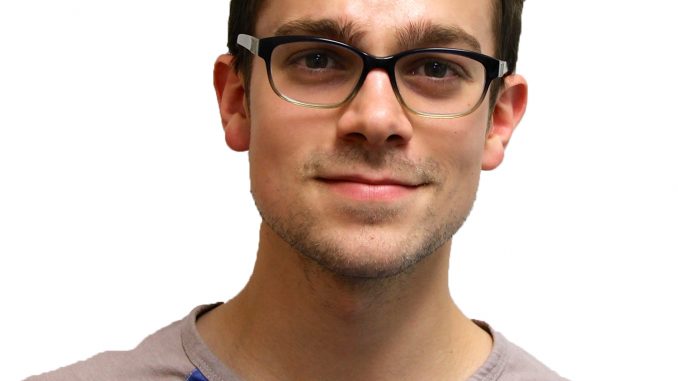
 Beam by beam, a tomb is being built around a man’s face in North Philadelphia. His eyes are frozen in time, his face paralyzed as cigarette smoke drifts out of his mouth mid-exhale.
Beam by beam, a tomb is being built around a man’s face in North Philadelphia. His eyes are frozen in time, his face paralyzed as cigarette smoke drifts out of his mouth mid-exhale.
He is painted onto the side of a row home; trapped there as a construction company acts as the Montresor to his Fortunato, torturously building up around him as the crew works day and night to erect an apartment complex designed to house Temple students from out of town.
He was a local man, and for a decade, his gaze peered over a vacant lot on the corner of 16th Street and Montgomery Avenue to remind North Philadelphians of the deadly effects of secondhand smoke. By the time the weather warms, his face – along with the multitude of local faces with which he shared a mural – will exist only in a coffee table book, and will represent something else entirely: a sullen reminder that those in charge of North Philadelphia’s architecture are more invested in catering to students than maintaining the heart of a community.
By May 2014, North Philadelphia will lose the mural “In Living Memory: Those of Us Alive” due to the planned construction of a $9 million student housing complex designed to hold more than 100 students. The mural was completed in 2003 by mural artist John Lewis, but come May, it will be fully obscured by the new residences, which are owned by real estate agency Maze Group Development.
More than 3,600 murals adorn brick walls and stone facades throughout the city. Philadelphia is a city of murals, more so than almost any other town on the planet. The Mural Arts Program, responsible for the installation of nearly every mural in Philadelphia since 1984, exists to curb errant graffiti in the city, often employing previously convicted vandals to create publicly sanctioned paintings throughout town. The program offers tours that regularly draw tourists and high school field trips into the city each year.
While it is inevitable that Temple’s ever-burgeoning enrollment numbers – the Class of 2017 is, yet again, the largest class in university history – will drive demand for housing in areas that surround Main Campus, it is important to note the costs that come part-in-parcel with a constant influx of transient students: the gradual erosion of the small landmarks that tie local communities to the city at large.
In the grand scheme of things, “Those of Us Alive” did not exist for a particularly long time. But for the area’s year-round residents, building over one of the only legitimate works of art in an area as blighted as North Philadelphia is a reminder that the rest of the city would rather build a tomb around the area’s past than continue to stare at it at all.
Jerry Iannelli can be reached at jerryi@temple.edu or on Twitter @jerryiannelli.



Be the first to comment